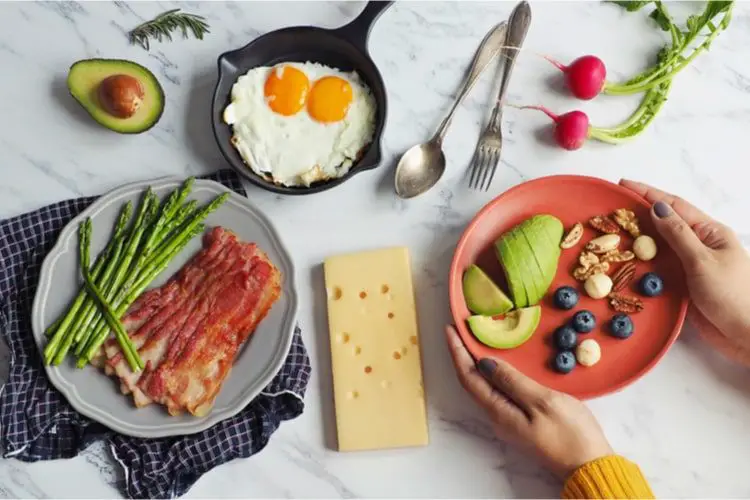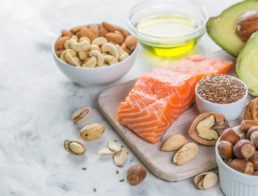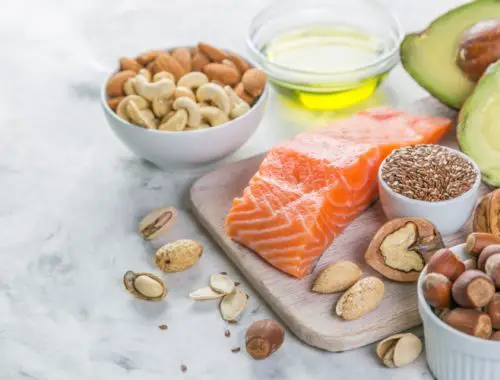The keto diet is everywhere. We see it online, on TV and all over grocery stores. You’ve probably been bombarded with countless keto advertisements. With all of the attention, there’s no doubt that millions of people want to try out the ketogenic diet. If everyone is talking about going keto, we all should try it. Right?
The Ketogenic Diet 101
If you’re wondering how to start a keto diet, then you’re in the right place! As a registered dietitian, I will give you evidence-based information about the ketogenic diet, how to do it and who should avoid it. Keep reading for steps on how to start going keto.
Where did the ketogenic diet come from?
The ketogenic diet was originally intended to treat those with epilepsy. While it was once considered the last option to treat epilepsy, the keto diet and others like it have been refined to become a critical part of epilepsy management (1).
Why is keto so popular now?
Nowadays, the keto diet is marketed to the masses. Perhaps one of the biggest reasons the ketogenic diet has become so popular is because of its weight loss claims
Unfortunately, despite what we hear from keto lovers, research behind the keto diet for weight loss isn’t impressive. Some studies do suggest that you may lose more weight on a ketogenic diet initially but not in the long term (2). When compared to other diets, the ketogenic diet yields similar weight loss results after 1 year (3). So if you think keto is “better” for keeping the weight off, it’s not the case.
How is the keto diet structured?
Surprisingly, universal ketogenic diet guidelines are lacking. In the most basic sense, the goal of the ketogenic diet is to put the body into ketosis (learn more about ketosis in Step 1).
We can help the body go into ketosis by following a ketogenic diet. Here’s the basic dietary structure:
- High in fat
- Low to moderate amount of protein
- Low in carbohydrates
How to Go Keto
Now that you have some background on keto, let’s break it down step by step!
Step 1: Educate yourself about ketosis
You may already know that our body takes the food we eat and turns it into energy for daily functioning. Normally, we burn carbohydrates for energy. We save fat and protein for other needs in the body.
As mentioned before, the ketogenic diet is an eating pattern that strives to put the body into ketosis. Ketosis is one way for our body to use energy, but it is not the preferred way. In ketosis, the body uses fat for energy.
So, that’s why the keto diet is high in fat. The idea is to manipulate what nutrients are available for the body to use. In a high fat, low carb diet, the body has to use fat for energy since there are little to no carbs available.
To start a keto diet, it is essential that you have a basic understanding of ketosis. If you’re not in ketosis, then you’re not doing keto correctly.
Step 2: Ask your doctor if going keto is safe for you
There are many medical conditions that can be negatively affected by a keto diet. If you have any of the following, you should not engage in a keto diet:
- Pancreatic disease
- Liver disease
- Gallbladder disease (or you have had a gallbladder removal)
- History of eating disorders
- Thyroid issues
- History of kidney stones
- Heart disease
- Diabetes (if your doctor has not adjusted your medications to fit a keto lifestyle)
Step 3: Learn what foods keep you in ketosis
Fat is your friend when you are doing a keto diet. That being said, the types of fat you consume can make or break your health and your weight. Below is a table of high fat foods that can help structure your keto diet.
The left column lists healthy fats you should try to eat most often. The right column lists high-fat foods that can promote ketosis, but are quite unhealthy. If you are trying to lose weight, make sure you limit the portion size of all fatty foods.
| Healthy Fats for a Keto Diet | Unhealthy Fats for a Keto Diet (limit these) |
|---|---|
| · Avocado | · Fried foods |
| · Nuts and seeds | · Red meats (beef, pork, lamb) |
| · Nut butter | · Full fat dairy (sour cream, whole milk) |
| · Healthy oils like olive, grapeseed, flax and canola | · Butter and margarine |
| · Tuna, sardines and salmon | · Shortening |
| Are you also vegan? Click here | · Lard or other animal fats |
For an even more in-depth review of keto-friendly fats, read this article.
Step 4: Learn what foods kick you out of ketosis
Your body doesn’t like to stay in ketosis. It will try to get out of ketosis whenever possible and go back to burning carbs for energy. If you eat too many carbohydrates (even a small amount), then you can jump out of ketosis.
| Foods to Limit on a Keto Diet |
|---|
| · Fruit |
| · Vegetables |
| · Starches |
| · Grains |
| · Legumes |
| · Dairy |
| · Soda |
| · Candy |
| · Pastries |
| · Snack foods (chips, pretzels) |
According to the Academy of Nutrition and Dietetics, a proper keto diet is one that limits carbs to 50 grams per day or less.
Besides limiting carbohydrate foods, remember to also control your protein intake. Eating too much protein can also kick you out of ketosis.
Step 5: Keep checking that you’re in ketosis
Remember: You have to be in ketosis to do the ketogenic diet successfully! Here are ways to check:
- Blood tests at your doctor’s office
- Finger prick test strips (consult your doctor before using)
- Urine test strips
- Bad breath
- Decrease in appetite
Please note: Some of these methods are more reliable than others.
Step 6: Know the Risks
There are many risks with a keto diet, especially if you do the diet for a long period of time. Ketosis is not a preferred state for the body and that can lead to unpleasant symptoms. Keep these risks in mind:
- Nutrient deficiencies in vitamins A, C, K and folate
- Keto flu
- Keto rash
- Irritability
- Fatigue
- Lack of fiber (since fiber-rich fruits and vegetables are limited)
- Poor prebiotic and probiotic intake (but this supplement can help with that)
A Final Note about Going Keto
The ketogenic diet is a difficult diet to do correctly and for the long term. If you are interested in going keto or find yourself struggling, see a registered dietitian in your area. Your local registered dietitian can help you determine if keto is right for you. They can also help you create a sustainable diet plan that helps you meet your goals (and one with your favorite carbs included).









